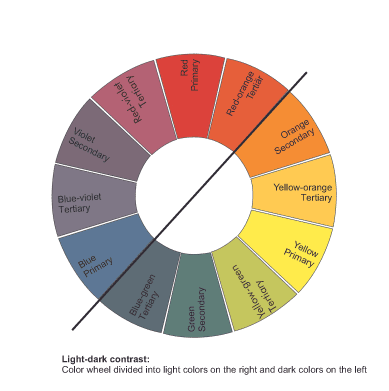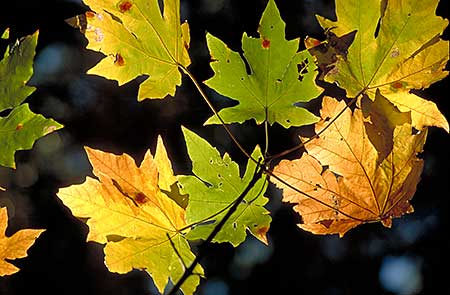You are here: Nature Science Photography – Lightness and color – Opponent color combinations in image composition
Light-dark contrast is a primary optical contrast that contributes significantly to image tension and forms a visually stark polarity. Black and white, blue and yellow, or a combination of the darkest achromatic color and the lightest chromatic color are obvious examples. However, the interaction of colors with varying brightness can also produce other visual effects. For example, light areas appear larger than identically sized dark areas because the light area outshines the dark area. This is called irradiation. In addition, dark objects appear heavier than light ones, and light bodies appear closer to us than dark ones. Arranging the colors correctly, such as placing yellow before black, creates a convincing three-dimensional image effect. If one includes all this in the weighting of the colors, then one can arrange them according to their brightnesses by numbers. Goethe established these relationships in his theory of colors, which we can now explain through the varying sensitivity of cone receptors: Yellow corresponds to 9, Orange to 8, Red to 6, Violet to 3, Blue to 4, and Green to 6.


Next
Main Lightness and Color
Previous Complementary contrast


 Since I started my first website in the year 2000, I’ve written and published ten books in the German language about photographing the amazing natural wonders of the American West, the details of our visual perception and its photography-related counterparts, and tried to shed some light on the immaterial concepts of quantum and chaos. Now all this material becomes freely accessible on this dedicated English website. I hope many of you find answers and inspiration there. My books are on
Since I started my first website in the year 2000, I’ve written and published ten books in the German language about photographing the amazing natural wonders of the American West, the details of our visual perception and its photography-related counterparts, and tried to shed some light on the immaterial concepts of quantum and chaos. Now all this material becomes freely accessible on this dedicated English website. I hope many of you find answers and inspiration there. My books are on